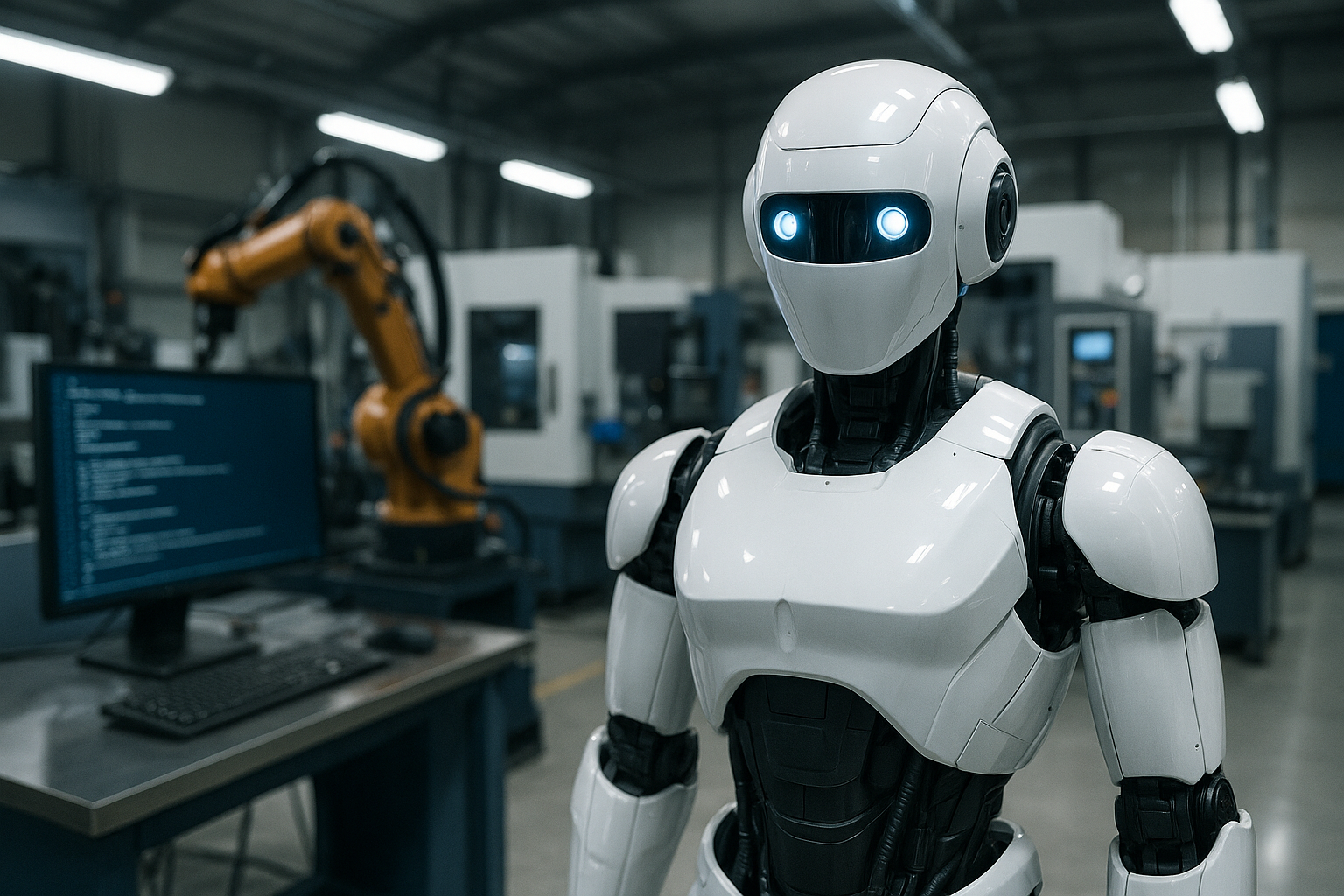From chatbots to industrial strategists: How AI agents are transforming manufacturing
Traditional manufacturing systems, though increasingly digitized, remain reliant on predefined rules, static algorithms, and narrowly trained models. These systems struggle to adapt to fluctuating demands, evolving production environments, and unstructured data. In contrast, GenAI-enabled agents introduce semantic comprehension, multimodal perception, and self-optimization.

A transformative shift is underway in the manufacturing industry as artificial intelligence (AI) moves from rule-based automation to intelligent, autonomous systems. A new study titled “AI Agents and Agentic AI – Navigating a Plethora of Concepts for Future Manufacturing,” published as a preprint on arXiv, delivers a detailed analysis of how AI agents, powered by large language models (LLMs), multimodal large language models (MLLMs), and Agentic AI, are reshaping industrial production.
The study explores the evolution of AI agents, the expanding technological boundaries of Agentic AI, and the potential of these systems to revolutionize knowledge retrieval, decision-making, and strategic planning in dynamic manufacturing environments. It also addresses the operational and organizational challenges that could hinder large-scale deployment.
How are genAI-enabled agents changing manufacturing intelligence?
Traditional manufacturing systems, though increasingly digitized, remain reliant on predefined rules, static algorithms, and narrowly trained models. These systems struggle to adapt to fluctuating demands, evolving production environments, and unstructured data. In contrast, GenAI-enabled agents introduce semantic comprehension, multimodal perception, and self-optimization.
LLM-Agents, which rely on natural language for input and response, integrate profiling, memory, planning, and action components to carry out complex tasks with minimal oversight. They use zero-shot and few-shot learning to generalize across tasks, enabling efficient textual data processing and automated documentation. While powerful, their limitation lies in single-modal input processing.
MLLM-Agents build on LLM-Agents by incorporating additional sensory inputs, images, audio, video, and structured signals, through a multimodal perception and fusion framework. This allows agents to perceive industrial environments more richly, understand situational context, and coordinate actions across diverse input types. However, they demand high computational power and must overcome semantic alignment challenges.
The study highlights several real-world applications of GenAI-enabled agents. For instance, Intelligent Manufacturing Virtual Assistants (IMVAs) and ChatCNC integrate real-time data from sensors and systems like ERP and MES, enabling engineers to interact with manufacturing systems via natural language queries, retrieve data semantically, and automate documentation. These capabilities mark a significant advancement from traditional AI's reliance on rigid keyword searches and structured databases.
Moreover, these agents enable contextual reasoning and cross-modal diagnostics in predictive maintenance, quality control, and operational efficiency. By synthesizing sensor inputs with historical and textual data, they offer more accurate diagnostics and actionable insights, bringing the manufacturing sector closer to true cognitive intelligence.
What sets agentic AI apart from existing AI agents?
Agentic AI represents a conceptual leap beyond LLM- and MLLM-based agents. While current AI agents perform predefined tasks within human-defined parameters, Agentic AI systems aim to independently define, pursue, and optimize complex goals. The key differentiator is “agenticness” - a multidimensional metric assessing goal complexity, environmental adaptability, autonomous execution, and contextual awareness.
According to the study, Agentic AI enables manufacturing systems to dynamically recalibrate objectives in response to supply chain disruptions, shifting market demands, and operational changes. This transition replaces static optimization with real-time, goal-driven decision-making. Rather than follow fixed schedules, Agentic AI could autonomously balance throughput, quality, and energy efficiency across a factory’s operations.
Agentic AI also enables adaptive planning, using reinforcement learning and multimodal analysis to respond instantly to disruptions. In logistics, for example, an Agentic AI could reconfigure workflows and reroute shipments without human intervention. This capability surpasses the limitations of today’s static AI models, which require frequent retraining and manual updates to remain effective.
Furthermore, while most AI deployments focus on siloed tasks like equipment monitoring or inventory forecasting, Agentic AI promotes system-level orchestration. It coordinates production lines, procurement, and inventory simultaneously, ensuring seamless end-to-end optimization. This is especially vital in high-mix, low-volume manufacturing environments where dynamic flexibility is key.
Finally, Agentic AI introduces the possibility of continuous, autonomous evolution. By incorporating self-supervised learning and real-time feedback loops, these systems can improve decision-making over time without human guidance, an essential capability for long-term efficiency, sustainability, and resilience in industrial ecosystems.
What challenges must be overcome for industrial-scale adoption?
Despite its potential, deploying GenAI-enabled agents and Agentic AI in manufacturing poses significant technological and organizational hurdles. One major barrier is cross-format document parsing. Manufacturing knowledge exists in fragmented, unstructured formats, PDFs, LaTeX renderings, and scanned images, that traditional AI struggles to process accurately. Ensuring semantic consistency across formats requires new document reconstruction frameworks.
Another technological challenge is fine-grained multimodal knowledge extraction. Manufacturing processes involve interrelated data, textual instructions, mathematical models, engineering schematics, that must be accurately aligned to form unified knowledge graphs. Achieving this semantic harmony is essential for coherent decision-making but remains technically difficult.
The study highlights interpretability as another pressing concern. Manufacturing decisions often involve high stakes, equipment safety, product quality, and compliance, requiring transparent, traceable reasoning. Current LLMs are black-box models with limited explainability, making them ill-suited for domains demanding accountability. Integrating causal inference and explainable AI (XAI) techniques is necessary to gain industry trust.
On the organizational side, workforce resistance and skills gaps hinder adoption. Many workers lack the training to interface with autonomous systems or interpret AI-generated insights. Overcoming this requires targeted upskilling programs and cultural shifts led by executive leadership.
Next up, accountability and return on investment (ROI) complicate deployment. As AI assumes greater decision-making autonomy, manufacturers must define responsibility frameworks and compliance protocols. Additionally, while AI promises efficiency gains, its ROI is often indirect or delayed, making it hard to justify upfront costs to stakeholders.
- FIRST PUBLISHED IN:
- Devdiscourse










